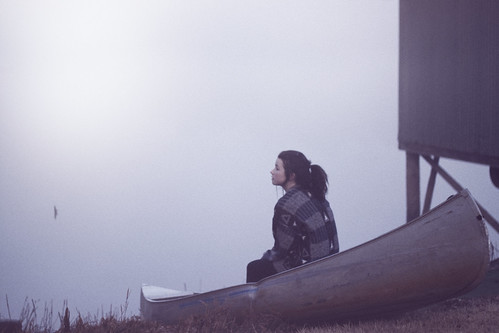During Tuesday Kim showed us some visual approaches that can be tried to represent your documentary. She showed us videos that are some made by students, which I have to say was surprising, because It looks really good. one particular video was very interesting, The Butcher’s Wife , a very intimate documentary depicting the abuse a mother has had. It was very intimate and personal, And it manages to make the audience to be emphatic with her. I liked that documentary because it helps me & shows me how to approach a sensitive subject & to create the atmosphere that fits the story. We got a bit more practical on Thursday, where we ‘go out and do great things’, which is where we experiment with sounds, camera techniques to achieve certain desires. I haven’t finished editing mine, but I want to experiment with sounds.
My approach to my next documentary lies similarly to the video example that I told you above. Something to do with sensitive and personal topic, that revolves around Indonesian people and migration.
I want to know, how Indonesian migrants, particularly the ones who moved to Melbourne under stress because of the May 1998 Riot. Many of the migrations at the time were unprepared, filled with anxiety and scrutiny. still researching and trying to find interviewees, Here are some of the question I might ask these people (I am still updating them, this is not final):
- Why do you choose Melbourne as a safe haven from the riot?
- Did you come here unprepared? If so, tell me the process until which you come to melbourne
- How do you cope when you first moved here? (Do you have another family here? How did you get a roof to stay, do you have any struggle financially?)
- Do you have any other challenges that you faced during these times that you want to share?
- How do you find/make an indonesian community here?
After some asking around, I found that after 20 year these topic still seems to sensitive to adults. I want to make clear to them that I do not wish for them to recall the horrific abuse the underwent when they were in Indonesia. I want to hear their story after they arrived at Melbourne. Be it a boring and mundane story, moving to Australia is no piece of cake.
Because many of the families that ran away to Melbourne in 1998 were mostly Chinese-Indonesian, I feel like they are mostly the victim of the scenario. But a friend of mine willingly told me his story of discrimination. he was an indigenous Indonesian, during the prescribed time was humiliated in front of the town hall with several other indigenous Indonesian by Chinese-Indonesians for something that they have no part of. I will be investigating further on this case as well.







